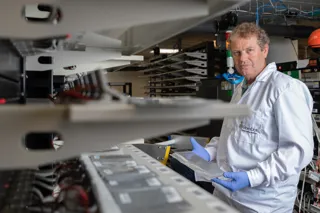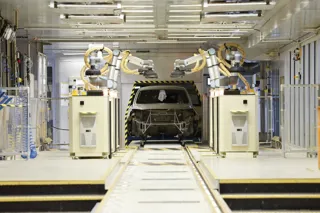Battery production for electric vehicles (EVs) could be constrained by a shortage of lithium, according to the Advanced Propulsion Centre (APC).
In its latest report, the organisation highlights concerns that 60% of the expected battery demand for cars and vans in 2030 would be met if only the most likely lithium projects are operating by the end of the decade.
The potential 2030 lithium deficit could be reduced if both the supply and demand sides of the lithium market work together and alternative powertrain solutions receive investment and development.
In the report, the APC models future scenarios on actions vehicle manufacturers could take to reduce lithium demand in specific car and van segments, providing an assessment of the relative impact of these solutions. The report notes that if strategic demand-side decisions are made now, the 2030 lithium deficit could be reduced by as much as around 40%.
OEMs know there is a demand for both standard and longer-range variants of their EVs, but the lack of lithium availability means the focus needs to shift to ‘adequate range’ vehicles with appropriately sized battery packs. Battery size inflation persists despite significant improvements in energy density.
The trend for larger battery packs sits alongside the increased consumer demand for larger family-size vehicles like SUVs. OEMs now offer fully electric variants with a range of approximately 300 miles on a single charge and in some premium versions, battery sizes of 100kWh are now commonplace.
Bigger batteries mean more lithium is required and findings in the report highlight that if vehicle producers continue to offer larger cars and vans to meet customer requirements, they should consider alternative powertrains such as hydrogen fuel cells to enable sustainable lithium demand.
While the APC sets a baseline global weighted average battery pack size of 65 kWh in 2030 for fully electric cars and vans, the reality based on the current trend is this could go as high as 80 kWh in a large battery pack size scenario.
Luke Bates, automotive trend strategist at the APC, said: ”We have assumed OEMs want to manufacture vehicles at the targeted rates and that their production will not be affected in 2030. If this is the case, then some vehicle manufacturers may look to limit their exposure to lithium markets by adjusting their powertrain and battery chemistry strategies for 2030.
“Limiting battery size in larger SUVs for example may mean some customers will compromise on range but this could lead to the manufacture and therefore availability of more affordable zero emission vehicles. This reduced range does, however, point to the need to ensure that reliable EV charging infrastructure is in place and fully operational.”
Sodium-ion batteries appear a promising technology as they share the same manufacturing processes as lithium-ion with the potential for a lower cost floor. While the technology is not yet commercialised or developed for use in vehicles, China is quickly building a sodium-ion battery manufacturing capability. Yet despite early investment from Chinese companies, significant global investment is needed to displace lithium-ion in significant quantities.
Unless significant energy density improvements are made, it’s likely sodium-ion will be more suitable for smaller passenger vehicles and stationary energy storage applications.
The APC report can be viewed here: https://www.apcuk.co.uk/app/uploads/2022/09/APC_xEV_Demand_Q22022_final.pdf






















Login to comment
Comments
No comments have been made yet.